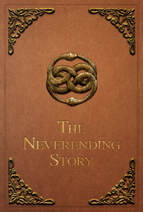The Book for Everyone Doesn’t Exist
Writers come to us when they’re passionate about a subject or excited to share a powerful message. They’re often way past ready to jump into the long and difficult work of turning their ideas into a real, and really good, book.
Typically, we listen to their (brilliant) ideas and then ask a few questions. Among these are questions about audience: Who is this book for? Who will be persuaded by this argument and this evidence? Who wants to be moved by this message?
For many of our authors, the reflexive answer is “everybody.”
The answer is simple: Because you can’t. You can’t shape your message—in a real and genuine and sincere way—so that it resonates at a deep level with absolutely everyone. The more you try to broaden its appeal, the thinner and more stretched and more general your message becomes. (And if your message is general, it’s just not necessary to spend the time and expend the effort on writing it into a book.)
In fact, if you’re writing your book for everybody, nobody will read it. It sounds harsh, but it’s true. Reading a book is an intimate act. We invite the authorial voice into our head, and we allow ourselves to be moved by its argument. If the voice feels artificial and insincere, or if the argument doesn’t seem applicable, we close ourselves to the message and toss the book into an abyss of forgetfulness.
So we encourage our writers to get specific in the book development stage—really specific. When we ask them to think about their audience and how their message will land, we crib from Seth Godin’s “Marketing in Five Steps” (from This Is Marketing):
For many of our authors, the reflexive answer is “everybody.”
Writers of nonfiction often assume that the wider they spread their net, the more readers they’ll capture. While it’s part of our job to convince them that this isn’t the case, it’s not an easy argument. Why
not write your book for everybody? Why not offer something with wide appeal? Why not aim to attract both your employee’s millennial social-worker daughter and your grandmother’s middle-aged podcast-loving male nurse?The answer is simple: Because you can’t. You can’t shape your message—in a real and genuine and sincere way—so that it resonates at a deep level with absolutely everyone. The more you try to broaden its appeal, the thinner and more stretched and more general your message becomes. (And if your message is general, it’s just not necessary to spend the time and expend the effort on writing it into a book.)
In fact, if you’re writing your book for everybody, nobody will read it. It sounds harsh, but it’s true. Reading a book is an intimate act. We invite the authorial voice into our head, and we allow ourselves to be moved by its argument. If the voice feels artificial and insincere, or if the argument doesn’t seem applicable, we close ourselves to the message and toss the book into an abyss of forgetfulness.
So we encourage our writers to get specific in the book development stage—really specific. When we ask them to think about their audience and how their message will land, we crib from Seth Godin’s “Marketing in Five Steps” (from This Is Marketing):
- Invent a thing worth making, with a story worth telling
- Design and build it in a way that a few people will benefit from and care about
- Tell a story that matches the built-in narrative and dreams of that small group
- Spread the word
- Show up
For some writers, it feels ugly to overlay marketing and bookmaking. But a marketing mindset is valuable. By focusing on the needs and dreams of a small group of people, you ensure that your “thing”—your story and your message—are meaningful because they absolutely and truly resonate with someone.

